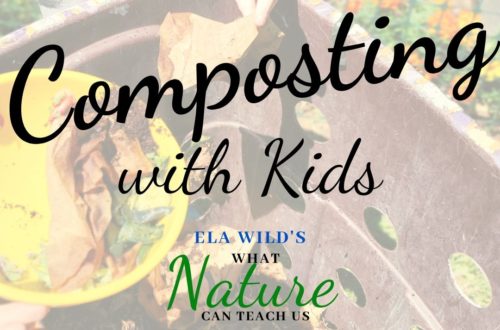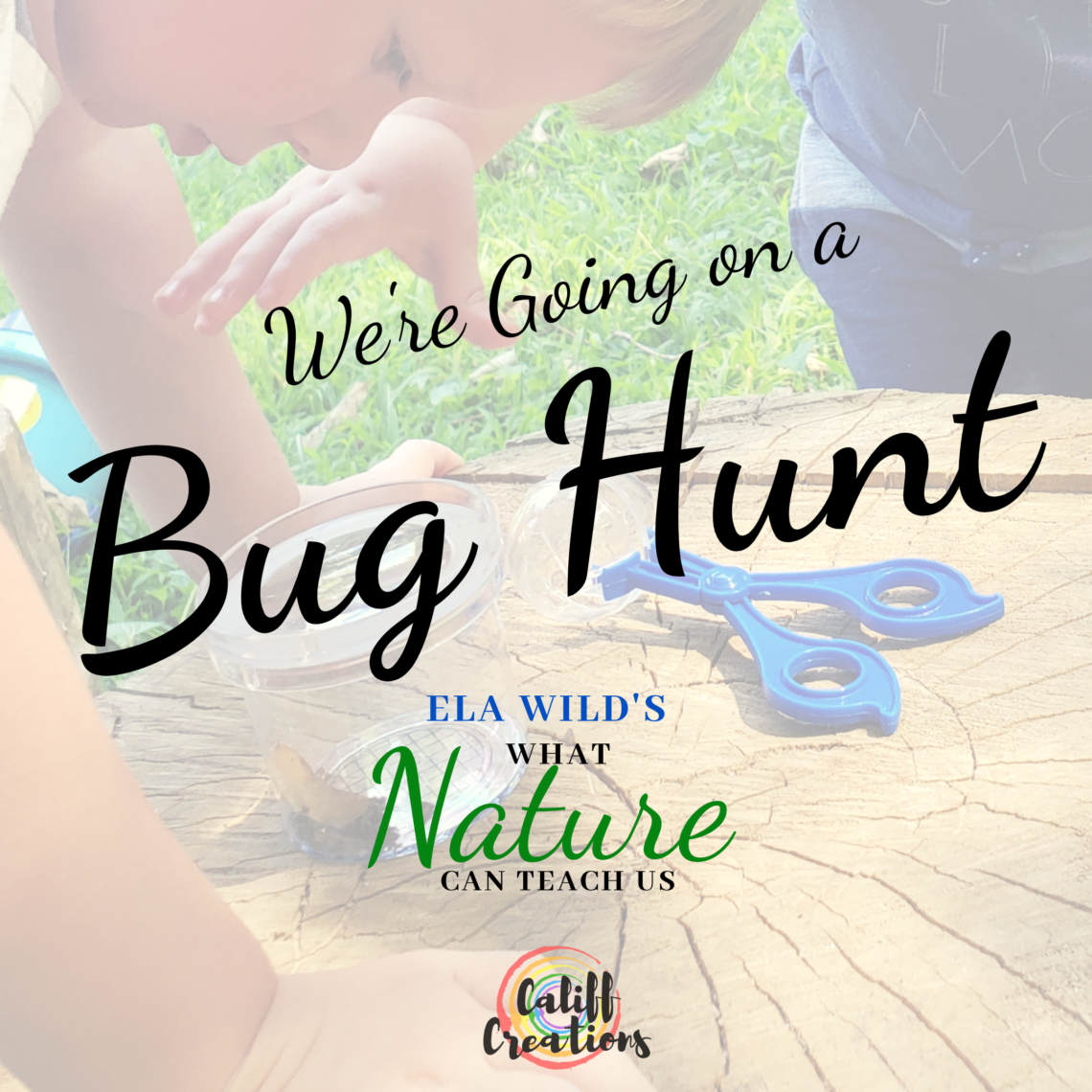
Bug Hunt: What Nature Can Teach Us
We’re going on a bug hunt! Hunting for bugs is a great way to get kids outside to learn and observe nature. Bugs are misunderstood but are a crucial part of the ecosystem. I know many kids (and parents) have an “ew” factor bordering on an irrational fear of bugs but they are rarely the bad guy in the story. Going on a bug hunt helps to shed those fears and replace them with fascination and curiosity.
From aiding in decomposition (like in composting) to maintaining the delicate balance of the ecosystem, bugs help to create the foundation of the natural world. A bug hunt is a perfect opportunity to learn more about this diverse group and learn about the importance of bugs.
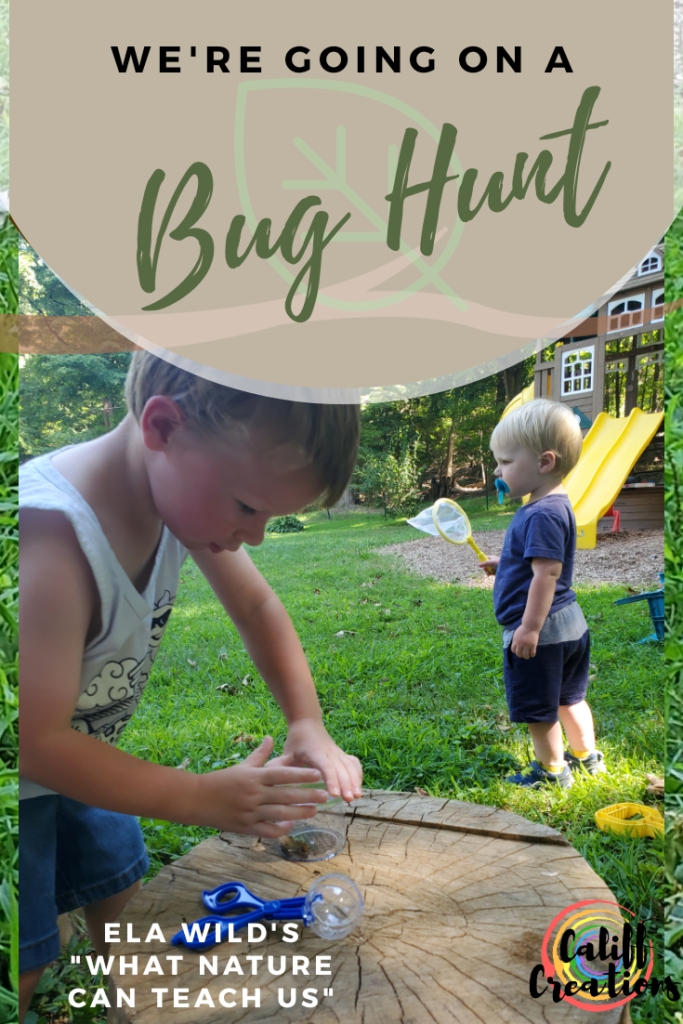
This post includes affiliate links. That means that if you purchase through these links that Califf Creations will receive compensation that is of no extra cost to you. This helps cover the costs of Califf Creations. You can read more on my disclaimer page.
Before the Bug Hunt Starts
Discuss some key points with kids to highlight the importance of bugs before a bug hunt.
Some topics to explore include:
- Bugs, especially bees and butterflies, pollinate plants when they visit the flowers and fly around.
- They disperse seeds to help new plants grow.
- Ants, earthworms, and other bugs cycle nutrients to aid in maintaining soil structure and fertility by aiding in the decomposition of organic materials.
- Spiders help control other bug populations, including mosquitoes.
- Bugs are near the bottom of the food chain. That means that they are an important food source for many larger animals like bats and hedgehogs. Even the North American Black Bear likes to snack on bugs!
Consider read a book about bugs before heading out to help get kids excited about bugs and learning about the crucial role they play in the environment. Click on the covers of any of these books to learn more about these awesome bug books.




Find more books about composting and the bugs that help in “What Nature Can Teach Us” about composting!
Gearing up for a Bug Hunt
Once you understand the importance of bugs, it is time to gear up to go on a bug hunt! You don’t need a lot, just grab a magnifying glass and some paper to record observations and you can head out. While you don’t need it, I do like to have a few more things that help make the bug hunt a success. You can click on any of the pictures for more information or to buy.
Magnifying Glass
Bug Observer and Tweezers
Bug Tongs
Butterfly Net
They also make some great kits that come with everything you need and more! Some even come with a fun outfit to dress up in before you go exploring on a bug hunt!
Make sure to protect yourselves from ticks before heading out into the woods. You don’t need to go into the wild for a bug hunt though. Going to the park, your backyard, or even just walking around the block are all options for a bug hunt.
Where to Look for Bugs
Knowing where to look for bugs can help make your first bug hunt a big success. Here are some of the best places to look.
- Among the flowers (look for pollinators!)
- In grass
- On trees
- In the ground (if you can, try digging in the dirt and seeing how many bugs you find. This provides the extra fun of getting dirty!)
- Under stones, logs, and leaves
- Creeks, ponds, river (any freshwater)
Ask kids why these are good places for bugs to live. It is a great time to stop and observe not just the bugs themselves, but the environment that they live in. Remember to encourage deeper thought by asking kids the follow-up question: “why do you think this is true?”
Questions to ask kids:
- What do the habitats have in common where we are finding the bugs?
- Are there more bugs in the shade or the sun? What kinds of bugs do you find in each and how are they different from each other? (example: ants in the sun and earthworms LINK in the shade)
- What bugs like dry areas and which ones like wet areas? Where do you find more bugs, wet or dry environments?
- What do you think the bugs eat? Take note of any marks on leaves or logs to show how bugs break down the organic material.

Let your Child Take the Lead!
Child-led exploration is always best in my opinion. Let them take charge and follow their curiosity. If they don’t want to watch ants, dig for earthworms (I have an entire post about this kid-favorite) or observe the butterflies around flowers. A bug hunt is meant to be fun, so let the kids take charge!
The Stars of the Bug Hunt: The Bugs!
I’m talking about ants and beetles, earthworms and slugs, bees and butterflies, and yes, the dreaded spider. You will find them all on a bug hunt! Let kids get close and observe nature at work. If they are old enough, have them write their observations in a nature journal. For younger kids, you can help them write and encourage deeper observation with some simple questions.
- How many legs does it have?
- Do you see any antenna? Are they straight or curved?
- How many sections does its body have? (example: an ant has 3: head, thorax, and abdomen)
- What color is it? Does it have any patterns?
- How big is the bug?
- Does it look squishy, slimy, soft, shiny, etc.?
- Any other interesting features? (stripes, bumps, spikes, etc.)
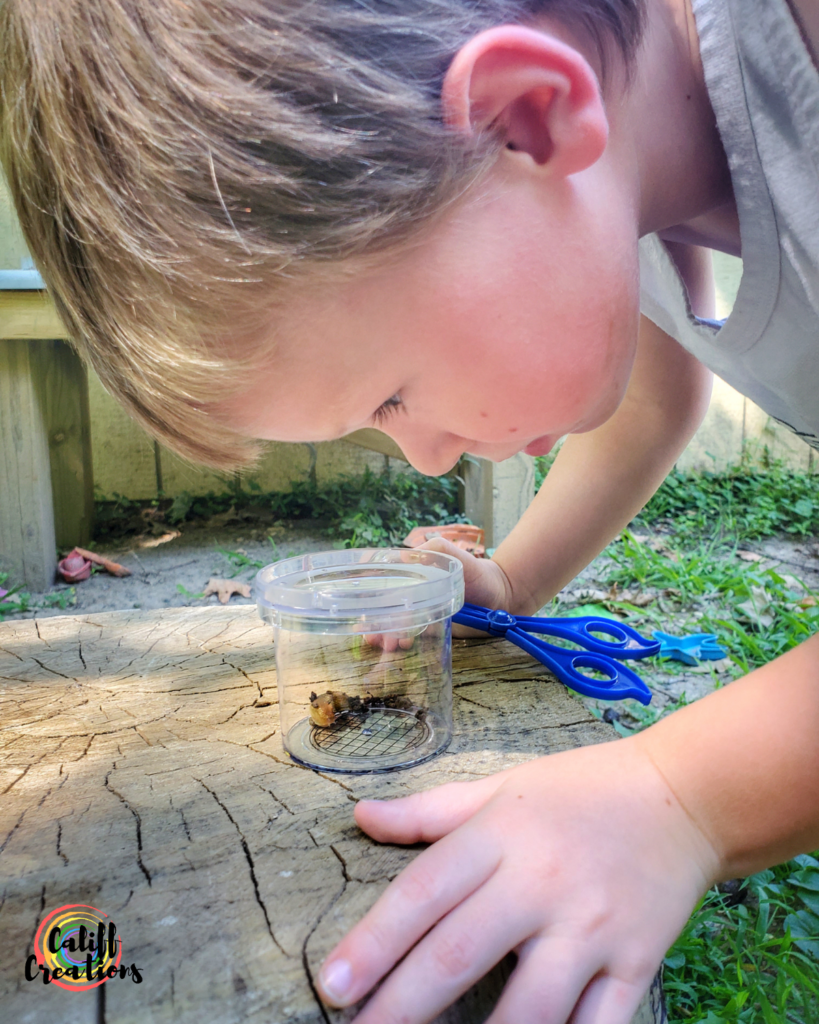
After you gather all this information, have kids guess what kind of bug they think it is. Take notes on all observations and guesses and you can try to identify the bugs more specifically later. Try taking a fun bug book written for kids or a full field guide with you to help identify bugs.
Physical Benefits of a Bug Hunt for Children
Going on a bug hunt doesn’t just sharpen a child’s observational skills, it also has incredible physical benefits. Simply being outside, breathing the fresh air and soaking in the vitamin D from the sun is healthy for kids. Here are some other physical benefits of a bug hunt for children.
Hand-Eye Coordination
We can all agree that hand-eye coordination is an important skill for kids to develop. Catching a bug isn’t easy and requires patience, timing, and hand-eye coordination. Whether children are trying to trap a bug under a cup or catch a flying insect in a net, they need hand-eye coordination to be successful. Going on a bug hunt is a fun way to practice and develop this skill.

Heavy Play
I’ve discussed the importance of heavy play before. It helps the skeletal and muscular systems as well as develop sensory skills. When kids lift a rock to look for bugs, their body learns how much pressure is needed to move that heavy rock. There is a lot more force required to move the rock than you need to pick up an earthworm. A bug hunt teaches kids how to judge these differences and how to adjust their actions to suit the situation in front of them. This is an important step in a child’s development that will be used as they grow up and play with other kids.
Example: The game of tag. Developing this skill allows kids to instinctively know the pressure needed to tag a friend without pushing them over.
Gross Motor Skills
A bug hunt also encourages kids to crouch, climb, jump over things and contort their bodies to squeeze into areas bugs like to hide. So, while kids explore the world around them, they are also exploring what their bodies can do.

Fine Motor Skills
Using bug tongs is a fun way to incorporate fine motor skills into a bug hunt. If kids are comfortable with it, encourage them to pick up slow-moving bugs with their hands to feel the movement. Earthworms and millipedes make for excellent opportunities to practice a gentle pincer grip!
Other Learning Ideas for a Bug Hunt
Counting
Count how many bugs you can find! You can count them over and over to practice this skill.
Sorting
How many different kinds of bugs can you find? Try sorting them by type, size, color, environment (i.e. dirt lovers, flying insects, etc.) or the number of legs.
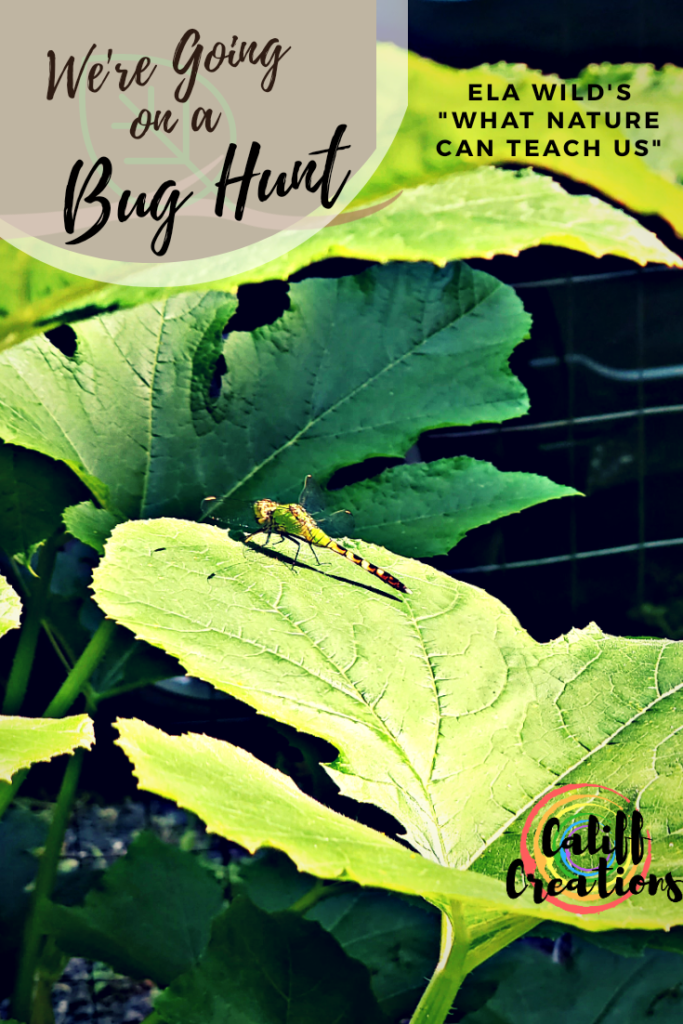
Colors
What colors can you find on the bugs? Try identifying bugs for each color of the rainbow if you can!
No bugs for every color? Try this FREE PRINTABLE OUTDOOR COLOR HUNT on your next adventure.
Magnification
Using a magnifying glass on a bug hunt is the perfect chance to introduce the idea of magnification to kids. Show them how to use it to observe details on small bugs that couldn’t be seen without magnification. Ask kids why they think things look bigger when they look through the magnifying glass. I always give children a chance to try and figure out these things on their own. The amount of detail you go into with your explanation of magnification will depend on the age of your child. It is never too early to introduce the concept!
Check out this great resource for more on magnification from Molecular Expression and Florida State University.

When are you Going on a Bug Hunt?
Now that you know what you need and all the amazing benefits of a bug hunt, the only question left is when are you going on a bug hunt and what will you discover?
Still not convinced on a bug hunt?
If you don’t want to go outside for a bug hunt, there are ways to observe certain bugs safely in your home. Try these fun options for observing bugs at home. Click on the pictures for more information.
Butterfly Garden: a classic childhood memory is watching our little caterpillars grow into butterflies and I can’t wait to repeat this activity with my kids.
Ant Farm: Watch the how ants work together and create an amazing maze before your eyes.
Worm Farm: Worms are so important for soil and you can watch how they work in your very own farm!
Terrarium: While this isn’t exactly bug related, it is fun to watch your own little ecosystem grow in this light up terrarium.
Follow us on Instagram and Facebook for all our fun adventures and find more nature-based learning with Ela Wild’s “What Nature Can Teach Us” and subscribe to my newsletter for new posts monthly.
Follow Me!





















